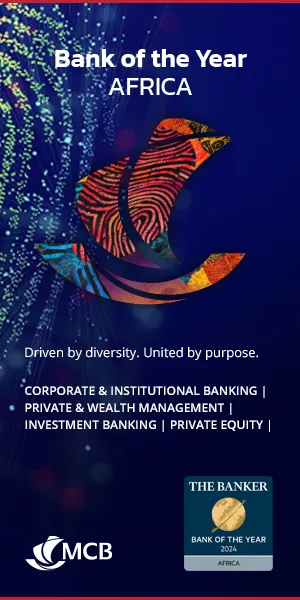Zimbabwe, according to the central bank governor, is on schedule to register a growth of over 9% for 2011. However, while this is welcome news, the growth comes from a very low base and it will take time before the growth can permeate the rest of the country.
The economy of Zimbabwe, which had sunk to the bottom of the global scale a few years ago, is now heading in the right direction, following up an 8.4% growth in 2010 with a projected growth of 9.3% for 2011. According to central bank governor Dr Gideon Gono, the mining sector is the major contributor to the growth of the Zimbabwean economy. Presenting his first monetary policy statement for the year, Gono said the expansion in economic activity in 2011 was underpinned by growth in mining (25.8%), agriculture (7.4%), finance and insurance (24%), distribution and tourism (10.3%) and manufacturing (3.5%).
He said a number of factors militated against the mining sector in particular and growth in the economy in general. Among these, he listed erratic power supply and rising utility costs; dilapidated infrastructure; uncertainty regarding the implementation of the indigenisation and economic empowerment policy; political uncertainty surrounding the impending elections; and the slow-down in export demand as global economic activity decelerates. Nevertheless, Zimbabwean citizens, virtually crushed under the weight of a dead economy for years, will take whatever comfort they can from the increasing signs of a return to normality in the commercial life of the country.
Controversial mining law
The government’s decision to ‘indigenise’ the economy, especially mining, requiring companies to surrender 51% of their stake to Zimbabwean black citizens, continues to generate discontent from investors. This has reduced the volume of FDI into mining and miners seem to have put expansion plans on hold.
Despite the controversy, however, Finance Minister Tendai Biti (MDM) said the sector had attracted $502m investment in 2011. Zimbabwe is home to the world’s second-biggest deposits of platinum, as well as vast reserves of gold, diamonds and coal. Biti said the mining sector was recovering gradually, with gold production expected to more than double to 28 tonnes next year, while diamond sales could total $600m. But he said the government was not getting enough in taxes from mining, so it will hike royalties for gold to 7% from 4.5% while those for platinum would double to 10%.
Economic analyst Eric Bloch said that while the GDP growth targets were attainable, the increase in mining royalties could undermine a sector driving economic recovery: “The economy, which is growing off a low base, could even grow by as much as 15%. My biggest concern is on the mining royalties, which are going to have a tremendous effect on mining operations, which are still recovering from a slump.”
Of great concern, however, is the fact that revenues from diamond proceeds are not finding their way into the fiscus. According to monitoring groups, tens of millions of dollars in diamond profits are being secretly extracted from state-owned mines in eastern Zimbabwe and bypassing the nation’s treasury.
“It’s quite clear that there’s much more money floating around than is justified by the level of economic activity,” said Eddie Cross, a Mugabe opponent in Parliament. He said that, based on information from geologists and production records, one company alone had mined $1.4bn worth of diamonds in Marange last year. Biti said the treasury had been shortchanged by at least $60m last year.
Referring to the proposals for a reconstituted Zimdollar, central bank governor Gono has been arguing that it is prudent to have a wider basket of currencies that would include the Zimdollar, the yuan, the US dollar, the rand and the pula, which have been in use since the adoption of the multicurrency regime in 2009. “The form and manner, as well as the resumption of the proposed new Zimbabwe dollar or whatever it will be called, will obviously take into account our national reserves in terms of strategic and precious metals such as gold reserves for backup,” he said. The reconstituted Zimdollar will be subject to discussion and approval by Zimbabweans and the authorities “alongside the yuan and other currencies, giving Zimbabwe a greater basket of choice than is currently the case”. Dr Gono has on numerous occasions spoken of a precious metals-backed currency, a direction other countries are now moving towards.
“Reflecting sustained price stability that has typified the multiple currency system, annual inflation remained low and stable in 2011 at levels below 5%,” Gono said. “Annual headline inflation which stood at 3.5% in January 2011, decelerated significantly to 2.5% in May 2011. Inflation, however, took an upward trend, rising to 4.9% in December 2011.’ He said following the liberalisation of trade in gold in February 2009, monetary authorities had “noted with great concern, an increase in illegal trade in gold that has also given birth to rampant smuggling of our country’s precious minerals.
“Regrettably, numerous individuals and companies that are in possession of Gold Buying Permits are misusing these permits and smuggling this precious mineral, thereby prejudicing the national economy of the export earnings.”
Dr Gono is cautious about the country’s prospects for the near future. “In view of the country’s high commodity dependency, declines in global activity and commodity prices will have inescapable consequences for the country’s export earnings, and hence its output, incomes and fiscal revenues,” he said. Diaspora remittances and investment flows are likely to weaken, with knock-on effects on domestic demand, banking sector liquidity and loan quality, resulting in more difficult credit conditions.”
Modern banking systems vital
The Reserve Bank of Zimbabwe governor said the meaningful recovery of the Zimbabwean economy was also contingent upon increased financial intermediation by the country’s banking sector: “The intermediary role of banks remains critical in the redeployment of surplus investable funds into key productive sectors of the economy.” “This is particularly so given persistent liquidity challenges that have lingered in the economy since the introduction of the multiple currency system. International commodity prices, which started the year on a solid footing benefiting from the recovery of the global economy and accompanying demand in 2010, , lost this momentum in the second half of 2011.
“In particular, commodity prices for platinum, copper and nickel retreated in the second half of 2011, on the back of the impact of the sovereign debt crisis on the performance of Eurozone and US economies,” Gono said. Gold prices, however, remained buoyant, largely benefiting from the weakening of the US dollar, increasing its demand as a safe investment haven.
Gono said the importance of the mining sector’s contribution to GDP, and the indigenisation and economic empowerment process promoting small to medium-scale enterprises (SMEs) could not be overemphasised: “We recommend that government through the appropriate ministry should embark on a mining sector mechanisation programme that will see a coordinated tie-up of owners of mining claims, producers of machinery and those who market the minerals.”
Gono warned that the successful orientation of the Zimbabwean economy on a sustained recovery and growth path required that the country’s unsustainable external debt be resolved expeditiously. Delays continued to militate against efforts by the public and private sectors to mobilise external lines of credit to recapitalise their operations and finance critical projects: “An effective debt resolution strategy if timely implemented will undoubtedly unlock the much-needed external lines of credit under any monetary regime.” The need for an adequately capitalised financial system in supporting private sector-led growth could not be overemphasised. “We also urge banking institutions to move with the times and embrace new financial products such as mobile banking and e-banking to reach out to the unbanked sections of our country.”
Want to continue reading? Subscribe today.
You've read all your free articles for this month! Subscribe now to enjoy full access to our content.
Digital Monthly
£8.00 / month
Receive full unlimited access to our articles, opinions, podcasts and more.
Digital Yearly
£70.00 / year
Our best value offer - save £26 and gain access to all of our digital content for an entire year!
 Sign in with Google
Sign in with Google 





